
Tokyo National Museum, from May 3rd (Fri) to 2nd (Sun), 2019
Special Exhibition "Beautiful Beauty-A Distinctive Art of Japanese Art-Sesshu, Nagatoku, Koetsu, Hokusai-"
Is being held. A preview for the media was held, so this time we will tell you how.
A "spinning project" that is being developed to spin the beauty of Japan, including royal items related to the Imperial Family, national treasures and important cultural properties, to a wide range of countries, and further to the future. At this exhibition, which will be held as a part of the exhibition, famous items such as Kano Nagatoku "Taraginshi Zukabutsu", a national treasure "Otoru Zukaru", and other famous works such as Sesshu, Ogata Koji and Katsushika Hokusai I will meet you in one place.
This exhibition, which will have more exhibitions than originally planned and will be held with full satisfaction, seems to be an attempt to be able to overlook the flow of Japanese art history, taking advantage of the Rewa Kaigen.
Exhibition scenery
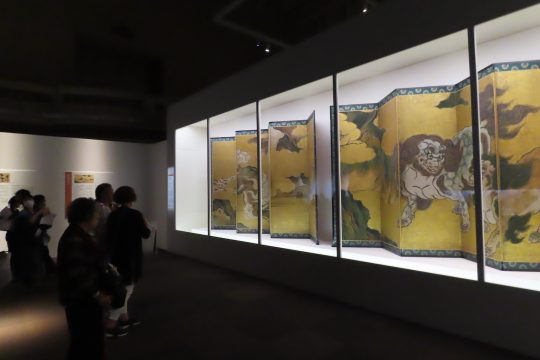
The viewing sequence of the "Making a Beauty" exhibition is 5 special rooms → 4 rooms → 2 rooms → 1 room. At the beginning of the exhibition is a large work by Kano Eita
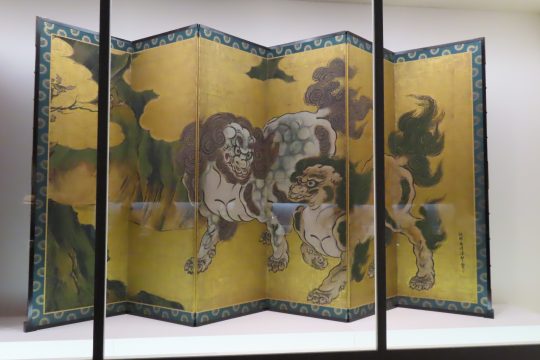
Kano Nagatoku writing "Tang gyoza-style screen" Azuchi Momoyama period · 16th century Miyauchi Government Sanonomaru Naokura
At the entrance of the special five rooms, displayed near the entrance of the exhibition hall, Kano Nagatoku "Tara Gyoza-style Screen" . It is Kano Nagatoku, who was established by the Oda Nobunaga and Toyotomi Hideyoshi era champions and led the stage of the period, but it is a particularly famous piece of the painting industry.
Eye power to squeeze the surroundings, brave body armor. I am overwhelmed at the beginning with its majestic striking power.
This work has an exceptional scale of about 2.2m in height and about 4.5m in width, but the top, bottom, left, and right are truncated, and it was originally larger, and it could be a barrier drawing to decorate the floor of the hall in the castle It also seems to have sex.
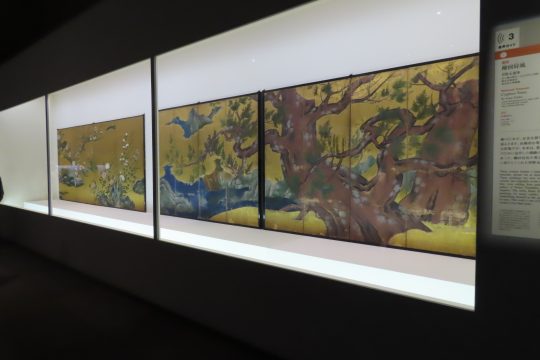
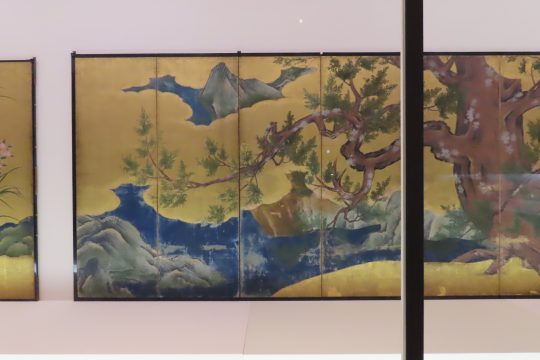
Kano Nagatok "Kotobuki Screen" 1590 Tokyo National Museum
The biggest highlight of this exhibition is that four special items that can extend the art of Kano Eitoku gather in one venue.
This is a national treasure "檜 檜" , which is said to have brushed out in the last years.
This work is also a part of the barrier picture, and it is said to have been drawn to the palace for the Hachijo-miya family that Toyotomi Hideyoshi built.
A rough stem of a wolf that pushes the gold cloud. Branches and rocks drawn with a strong, speedy brush stroke. I feel that the momentum of the time was received as it was, when I received the love of the world's champions.

Atsushi Namikawa "Seven Treasure Flower Butterfly Jar" is divided by metal wire

"Taiheiraku Figurine" by Katsuya Umino based on dance music
In recent years, the popularity of modern crafts making use of transcendental techniques has increased, but in the special four rooms, the works of four modern craftsmen are on display.
A work by Taiyo Rakuko , based on the performers of dance music " Taiheiku" , is produced for the purpose of exhibiting at the Paris World Expo held in 1833 in order to promote Japanese arts and crafts by the Emperor of Meiji. The work I did. You will simply lose your eye on the details and the elegance of the details.
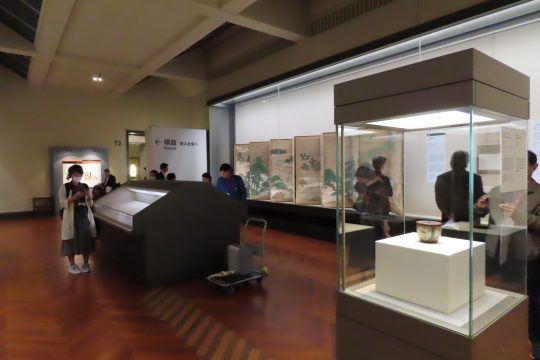
Display of two special rooms showing rich culture of Japanese culture and Waka
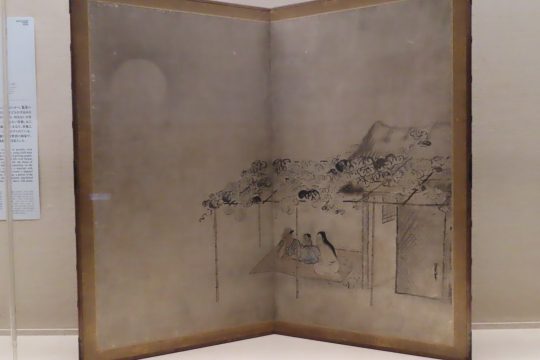
Kusumi Morikage "Autumn Breeze Screen" Tokyo National Museum
Two special rooms are on display, including a documentary showing the connection between Japanese culture and Waka, including the 11th century 'gen calendar school' during the Heian period. One of the most impressive impressions of this room is Hisayoshi Kusumi "Bon-no-zuru-buki" .
Under the fruit shelf of gourd, there are three parents and three at the same time, cool down in the evening. It cuts out the everyday scenes and there is a lack of power in the drawing lines, and it feels like some relaxed atmosphere.
I think that many people have seen this work in a textbook, but it is a national treasure.
Somehow, when I make such a work a "National Treasure", I feel the depth of the country of Japan, "Spirit".
It is a work with a refreshing sensation that you want to see and taste again and again in the coming hot season.
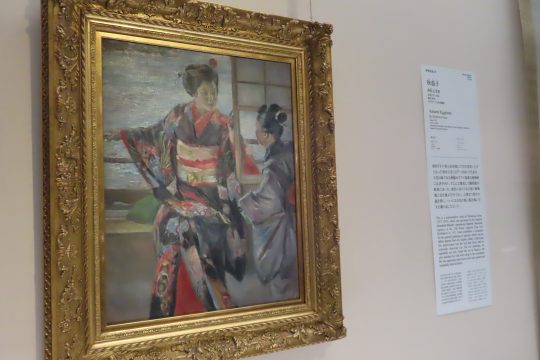
Kuroda Kioki's Maiko 1893 Tokyo National Museum
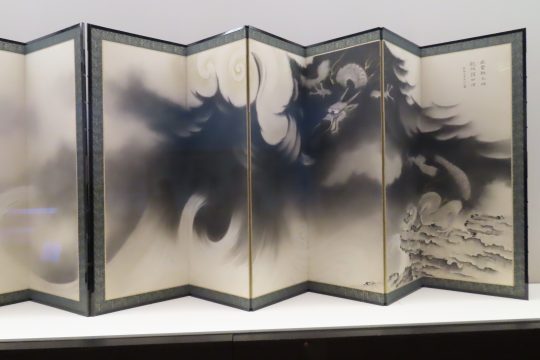
Yokoyama Taikan "Ryokubiteiku Shiho" 1936 Miyauchi Government Office Sanono Marunouchi Museum
In the special room, which marks the end of the exhibition, the co-starring of the Western film Seiki Kuroda and the Japanese painting Yokoyama Taikan.
While the motif is Japanese women in kimono-style, the “Maiko” is an oil-painted oil that has been painted in an unconventional fashion similar to Impressionism. The "Ryubite Chikoshi", a masterpiece depicting Japanese-style dragons in a Japanese style of folding screens, while being based on Chinese elements.
While seemingly contrasting work, it is said that Yokoyama Taikan evaluated Japanese sense in Kuroda Kiyoteru and showed a favor.
Japanese Art and the West, Asia. It is a very important piece of work that reflects the traces of mutual relationships in modern times.
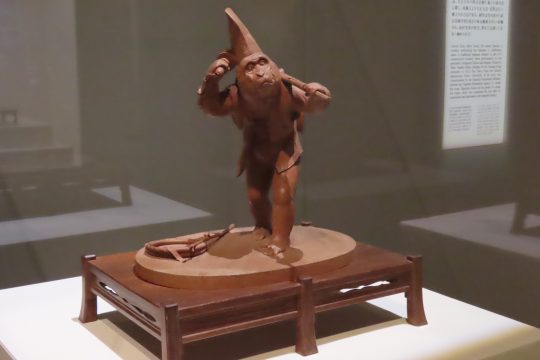
Takamura Mitsukuni "Saru Figurine" 1923 Miyauchi Government Office Sanono Marunouchi Museum
In addition to the above, there are a large number of fine items that should be called the fine arts of Japanese art, such as Sesshu-ji, "Autumn-Winter Sansui-zu" and Katsushika Hokusai "Seizen-zu".
The special exhibition "Beautiful Beauty-A Fine Art of Japanese Art-Sesshu, Nagatoku to Kotowa, Hokusai-" will be held until Sunday, June 2nd.
How about looking back on the historical steps of Japanese art at this time when the new generation began?
Outline of the event
| Exhibition name | Special Exhibition "Beautiful Beauty-A Distinctive Art of Japanese Art-Sesshu, Nagatoku, Koetsu, Hokusai-" |
| Session | Friday, May 3 2019-Sunday, June 2 9: 30-17: 00 (30 minutes before closing) (However, open on Fridays and Saturdays until 21:00) |
| closing day | Monday (but closed on May 6 (Mon.)), closed on May 7 (Tues.) |
| Venue | Tokyo National Museum Main Building Special 5 rooms, Special 4 rooms, Special 2 rooms, Special 1 room (Ueno Park) |
| Fee for viewing | General 1,100 yen (1,000 yen), university student 700 yen (600 yen), high school student 400 yen (300 yen) Junior high school students and below free ※ () in the group rate of 20 people or more ※ Person with disability certificate and one carer are free |
| Official site | h ttps: // tsumugu-exhibition 2019.jp/culturalexchange/ |


